64 Audio A3t - An Extensive Breakdown
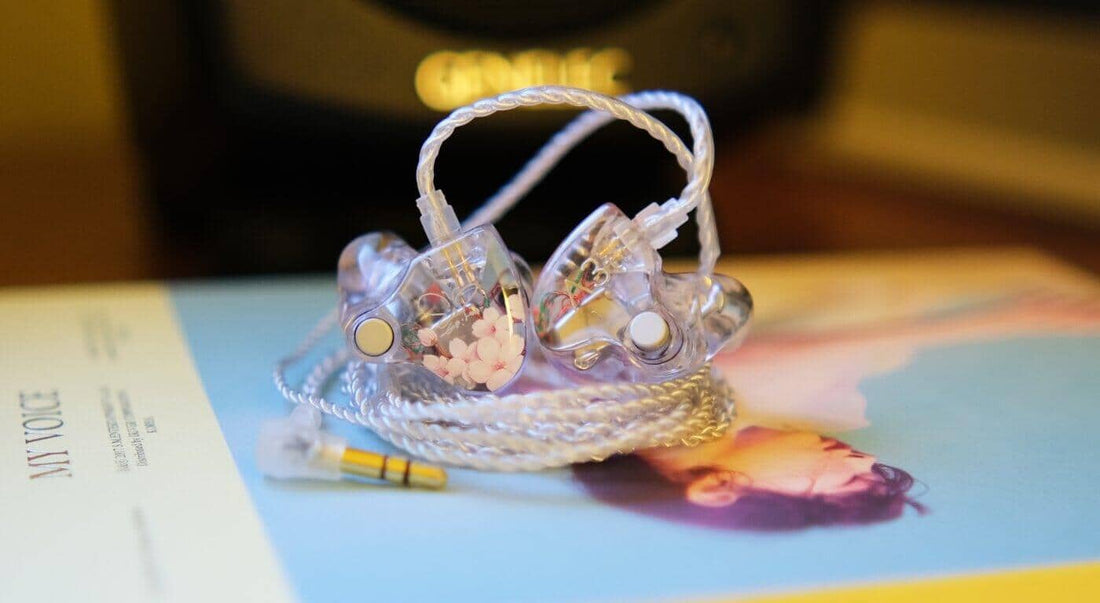
Introduction
Lower-driver count IEMs have always been a fascination of mine; executed correctly, they reflect as a demonstration of efficiency and what a company is able to achieve with what is often perceived as an inherent bottleneck. But these IEMs are becoming a lost art with few manufacturers catering to them, partly due to limited interest from audiophiles. Take a look at the Head-Fi forums, for example, and you'll see that all the rage is about 64A's flagship models and the latest $6K behemoth IEMs hitting the market. But the 64A lineup is actually quite diverse, and they have more than a couple IEMs on the more affordable end of the spectrum.
The 64 Audio A3t is one of the more interesting ones, and if you dig back far enough, you'll see that there's some juicy lore on this IEM. It was briefly teased in 2018 before being shelved with rumors circulating that it was too good for the price and that it would've capsized sales of more expensive models! This was later clarified by 64A as the A3t's original price point being too difficult to maintain. However, the mere existence of this rumor was enough to pique my interest. Then, following the A3t's official release in 2021 (with a price hike to $900), came early impressions of the demo unit from friends in Singapore: "it's decent," "it's pretty balanced, nothing standout", and "it's like plain water". All of which might sound like a low-blow, until you realize these are people in my position who have heard hundreds of IEMs. So I figured, what the heck? I'll take a chance on one.
This unit was purchased with my own money. As always, what follows are my honest thoughts and opinions to the best of my ability.
Source & Drivability
All critical listening was done off an iBasso DX300 and iPhone 13 Mini with lossless files. The stock 3.5mm cable was used. The A3t requires very little power to drive and I had no issue hitting my usual listening volumes (~70dB). Hissing was not an issue. If you'd like to learn more about my listening methodology, test tracks, and general beliefs in audio, then I would encourage you to check out this page.
In-the-Box
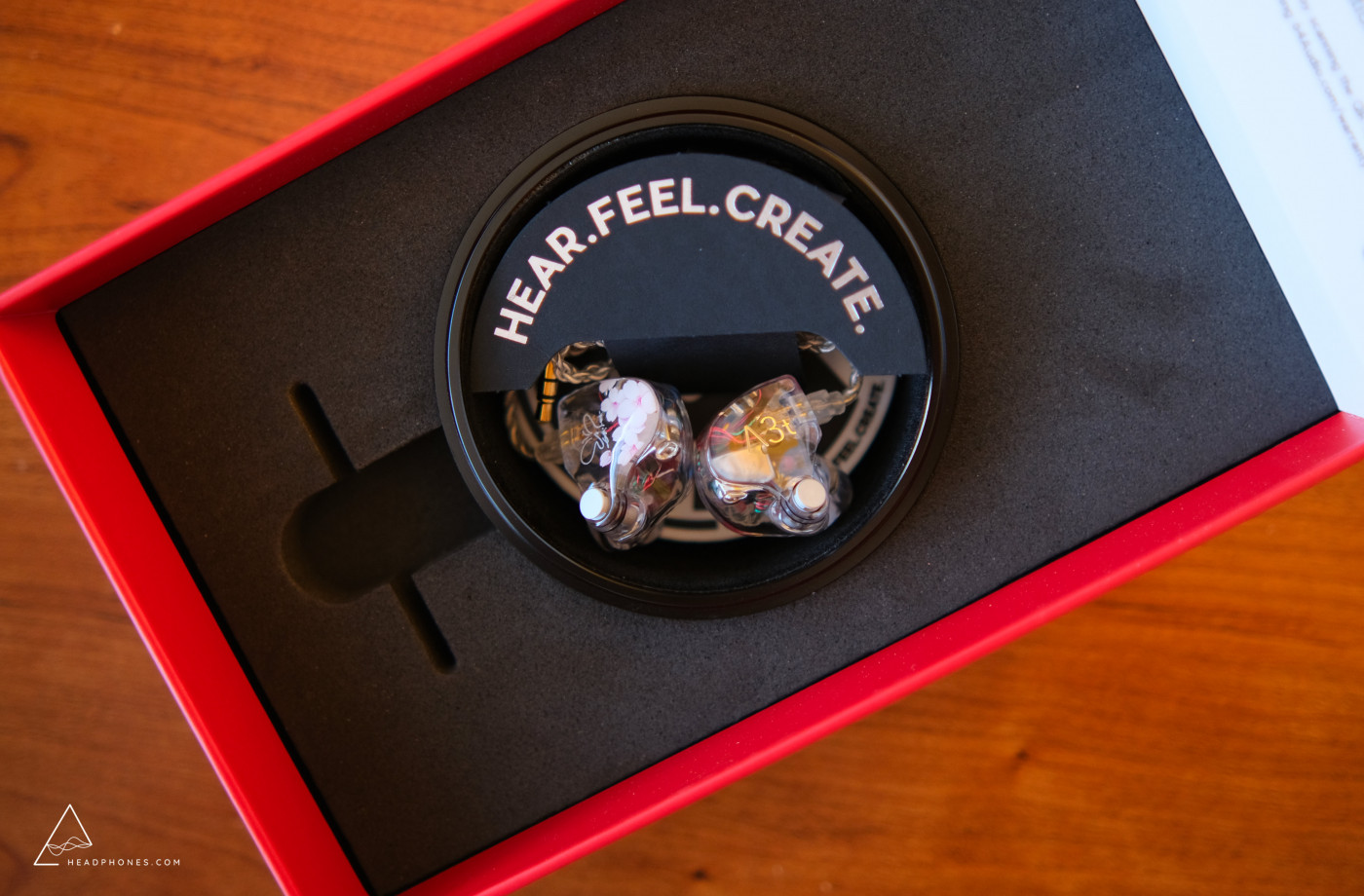
- A3t CIEMs w/ 2-pin cable
- M20 Apex modules
- Aluminum hockey-puck case
- Cleaning tool
- Sticker
I do wish more accessories were included with 64A’s CIEMs, as I find the current experience to be inconsistent with the universal lineup which has seen solid strides in this department over the last couple years. The inclusion of the MX & M15 Apex modules with the A3t would be a nice touch for example.
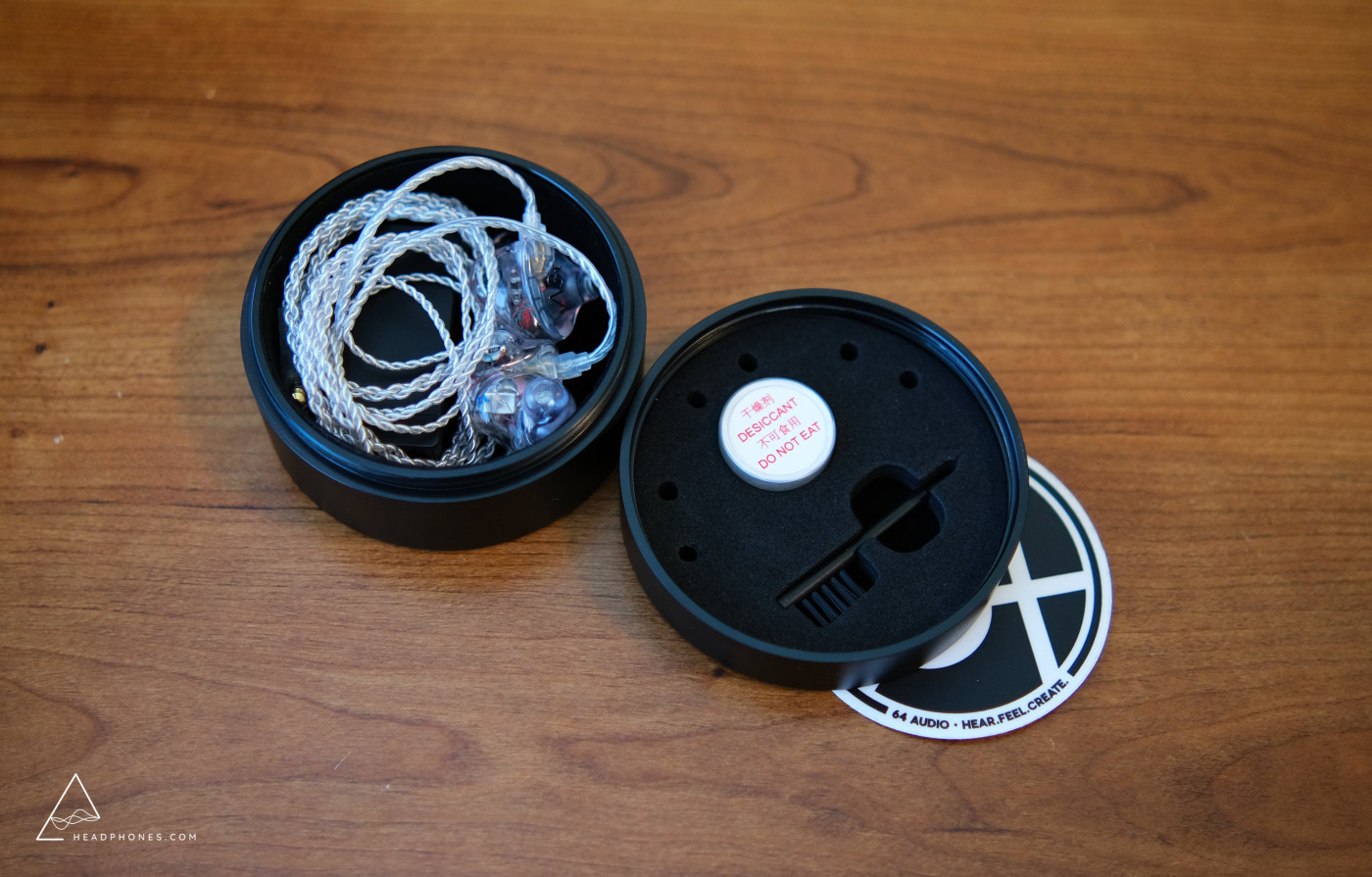
Generally, I like 64A's aluminum hockey-puck case. It has a clever foam insert in the lid that you can use to store extra Apex modules, desiccant, and a cleaning tool. I'm also able to fit the Qudelix 5K DAC/Amp in there with the IEM, so I have a compact portable setup. You can even choose a custom engraving free of charge. However, I should note that I have observed differences of quality between the three cases that I own. The latest one that came with my A3t, for example, has noticeably worse threading than the other two and it cross-threads more than I'd like.
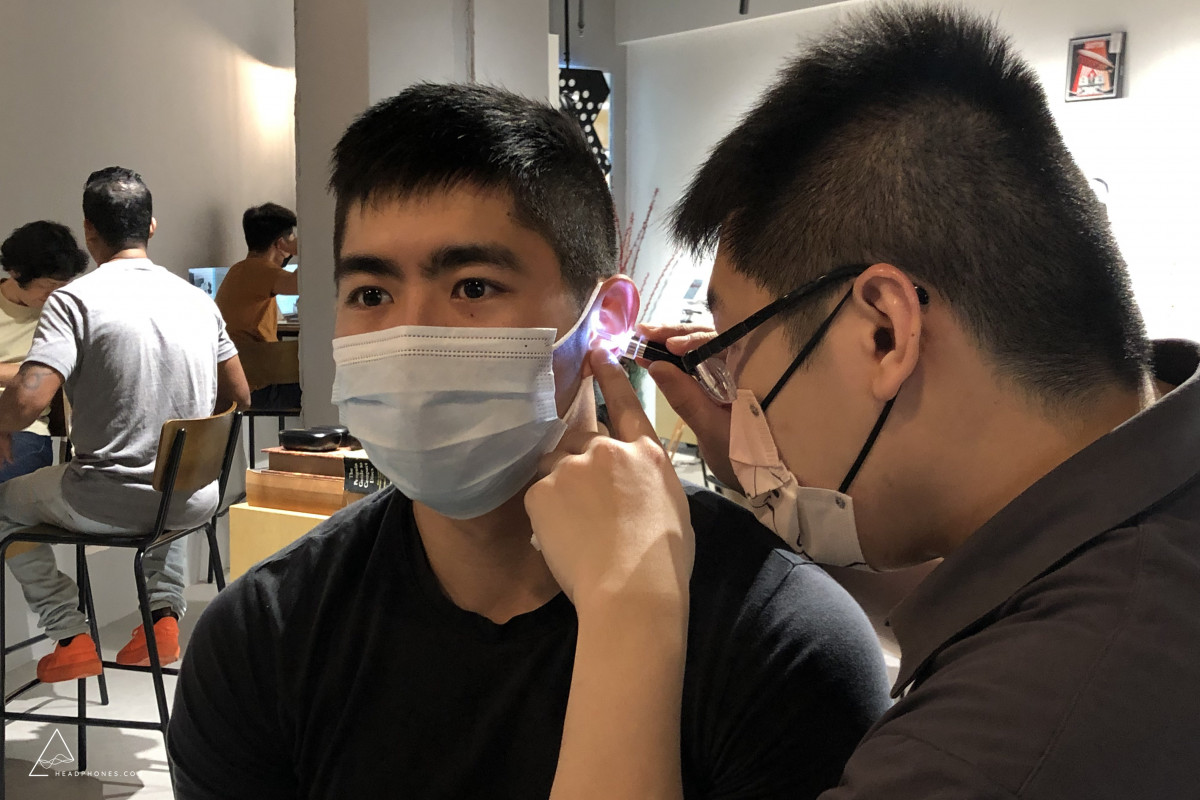
Getting ear impressions taken by James @ Zeppelin and Co.
The A3t is a custom IEM, so the shell is shaped to the unique anatomy of a listener’s ears. This requires having ear impressions taken by an audiologist; in my instance, I mailed 64A a new pair of impressions that were taken in Singapore by Zeppelin & Co. It took almost exactly three weeks from the date of which I ordered the A3t to which they were in my hands.
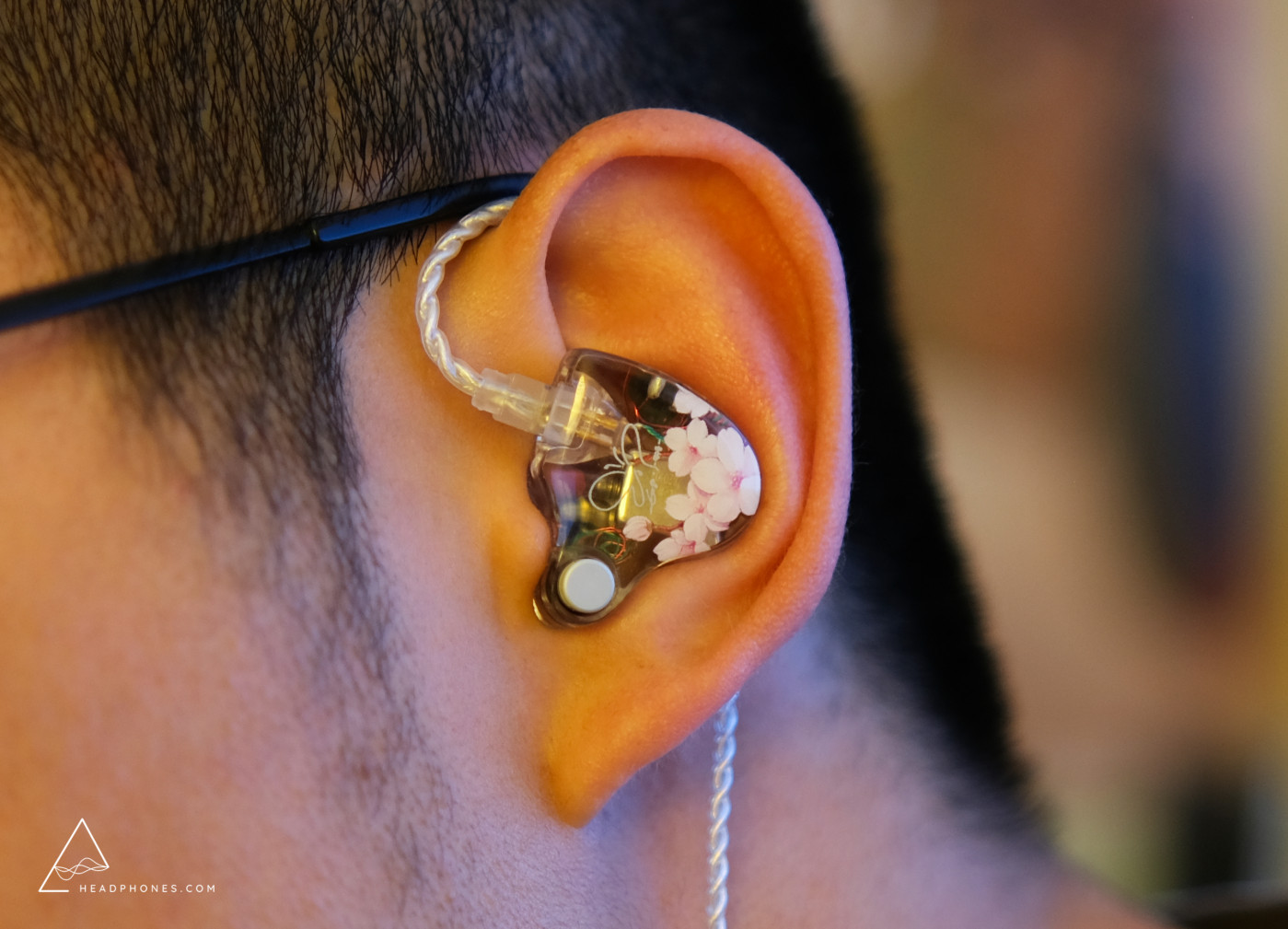

The fit of the A3t is expectedly excellent, and I can wear them the entire work day with minimal fatigue. Build quality is good. There are neither surface inconsistencies to the clear acrylic, nor are there discrepancies to the degree of clarity throughout. At my personal request, my A3t was fashioned with recessed 2-pin connectors. I chose recessed connectors for increased durability and the connector’s stronger aftermarket support in cables (relative to the IPX connector). However, it should be noted that 64A’s customs use the more unusual 0.75mm diameter for their connectors, so some standard 0.78mm 2-pin cables will be difficult to swap in. The cable that comes with the A3t is cheap, but it gets the job done. For better or worse, the memory wire is surprisingly pliable, so I don’t find myself minding it too much.
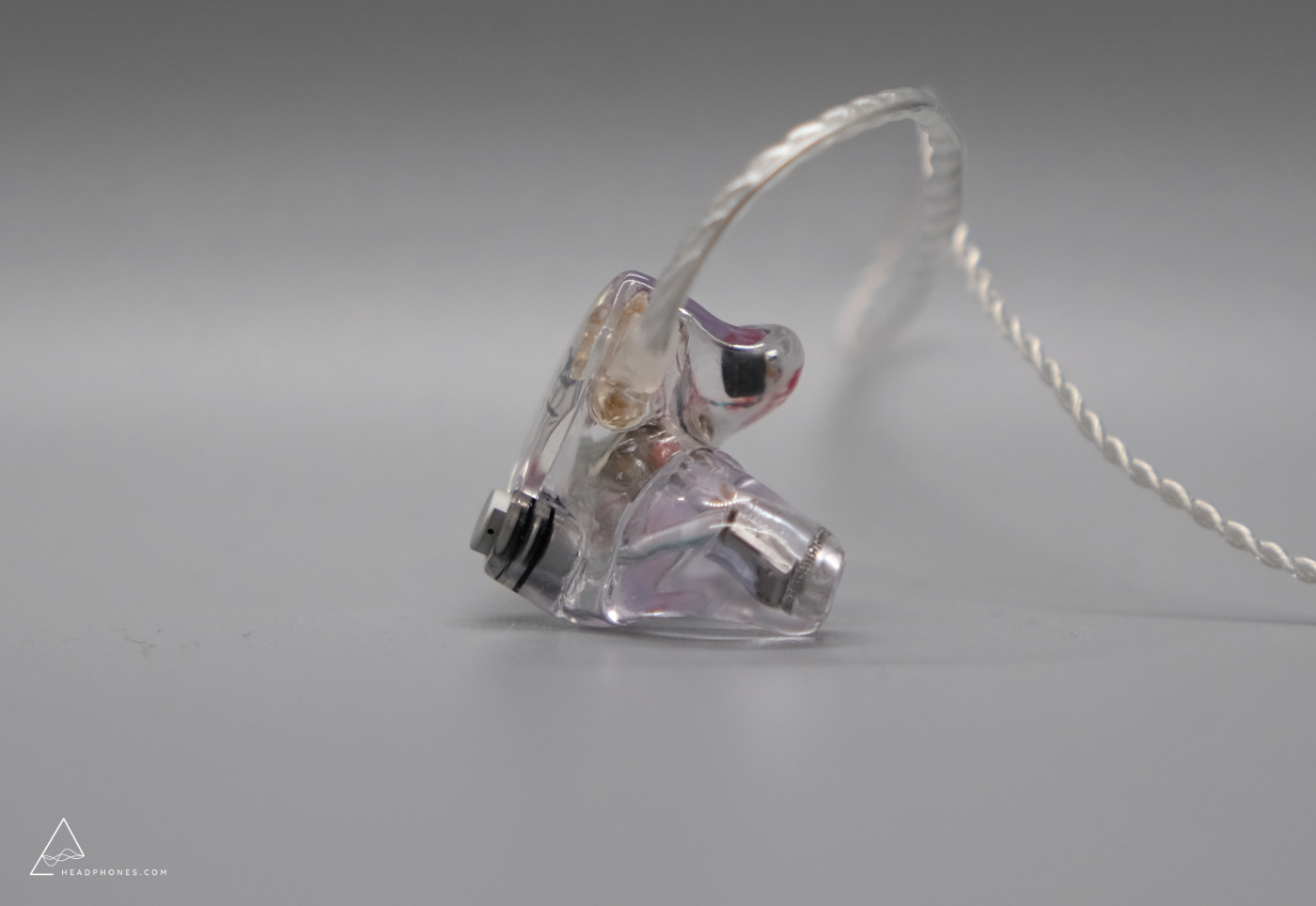
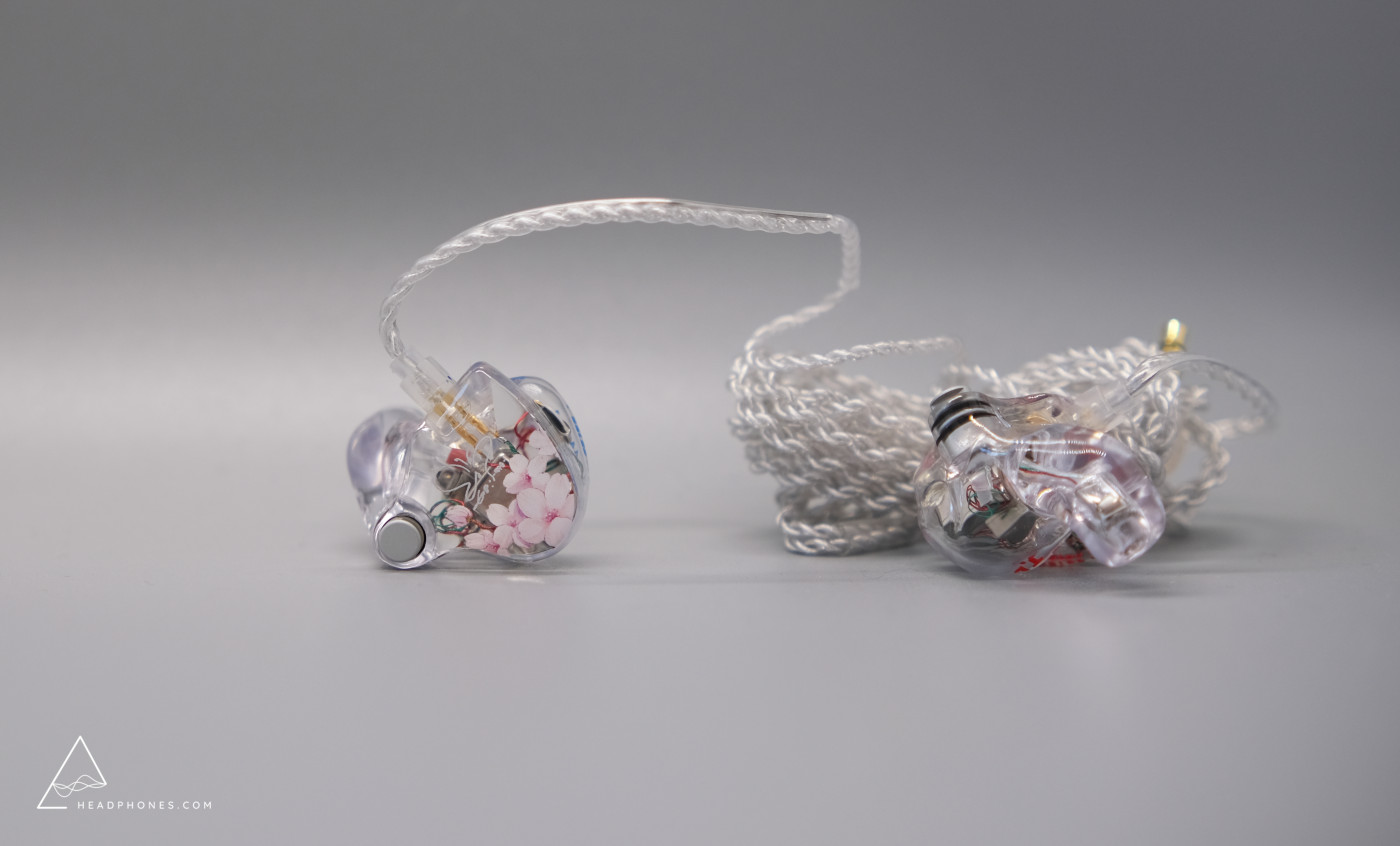
One will observe that the 3D printing of the shells appears to be a three part process: there is a “cut” at the base of the nozzle where the nozzle is mated with the majority of the shell, and then a faceplate which is fashioned to the outside of the shell. A major appeal of CIEMs - at least for the aesthetically inclined - is the ability to choose shell colors and faceplate artwork. I chose to keep it simple with the clear colorway and some blossoms adjacent to the butterfly signature of my favorite artist, Taeyeon. It turned out exactly how I envisioned it!
Gushing about the aesthetic aside, though, the other reason why I chose the clear colorway is so that I would have an unobstructed view of the A3t’s internals. And that in mind, let's get down to the nitty gritty.
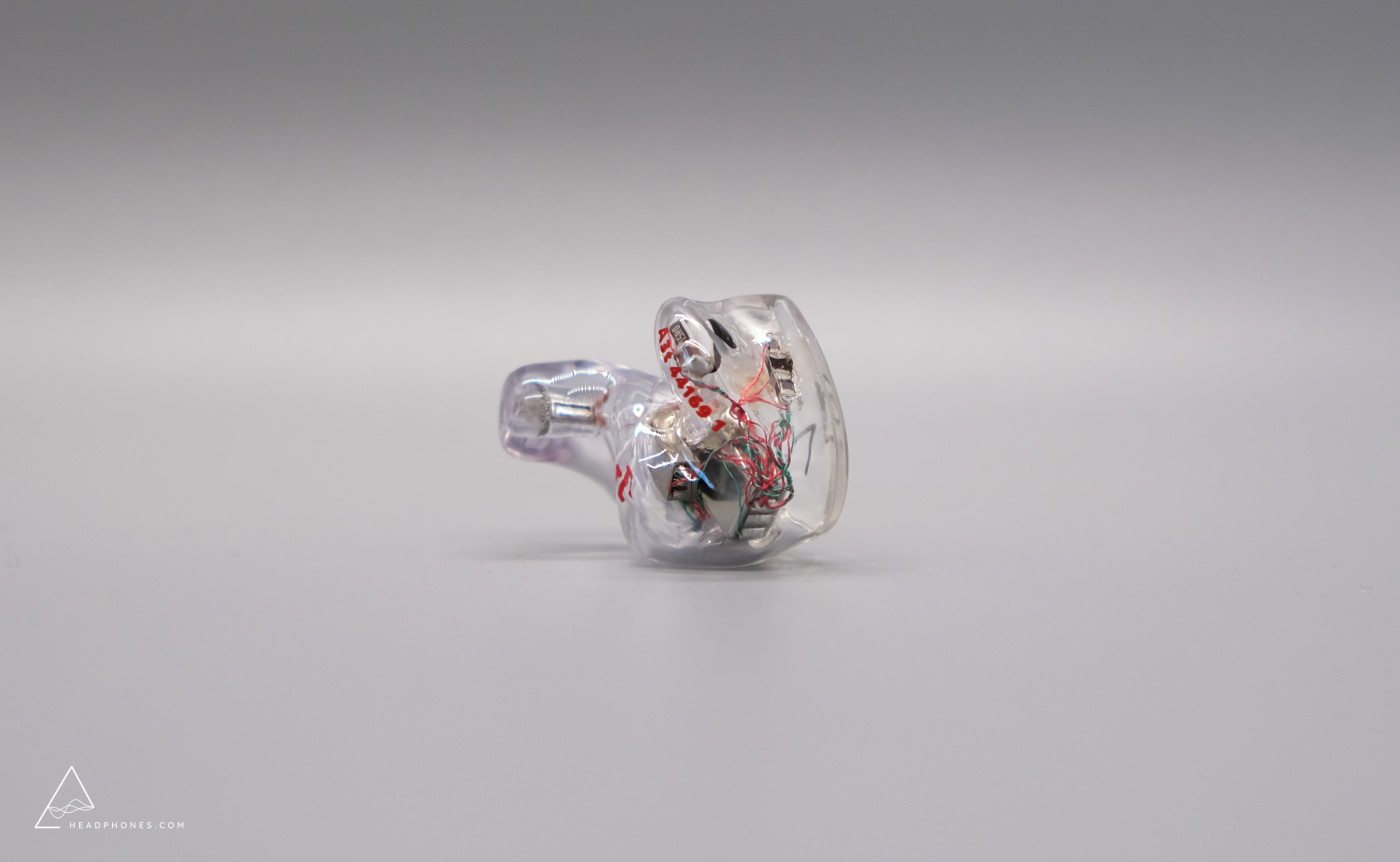
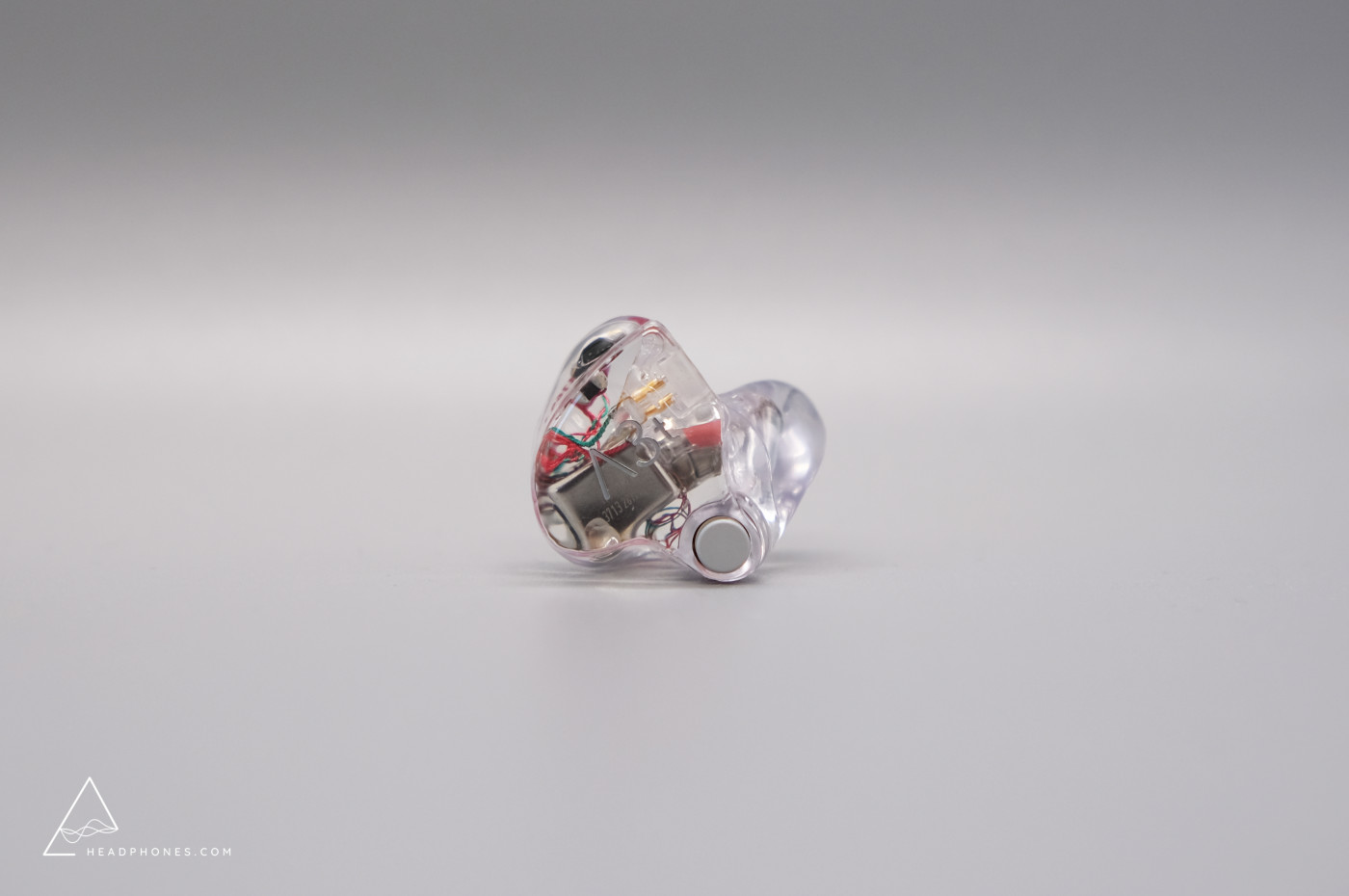
Driver configuration:
- 1x Knowles CI for bass
- 1x Knowles ED for midrange
- 1x tia (derived from Knowles WBFK series) for treble
The Knowles CI and ED are standard industry drivers, albeit ones that have been stamped with 64’s logo in the A3t, perhaps denoting custom tuning parameters. In any case, the tia driver is more interesting. 64A’s complete tia system consists of three components: open BAs, a single bore design, and acoustic chambers. The A3t utilizes two of these three components.
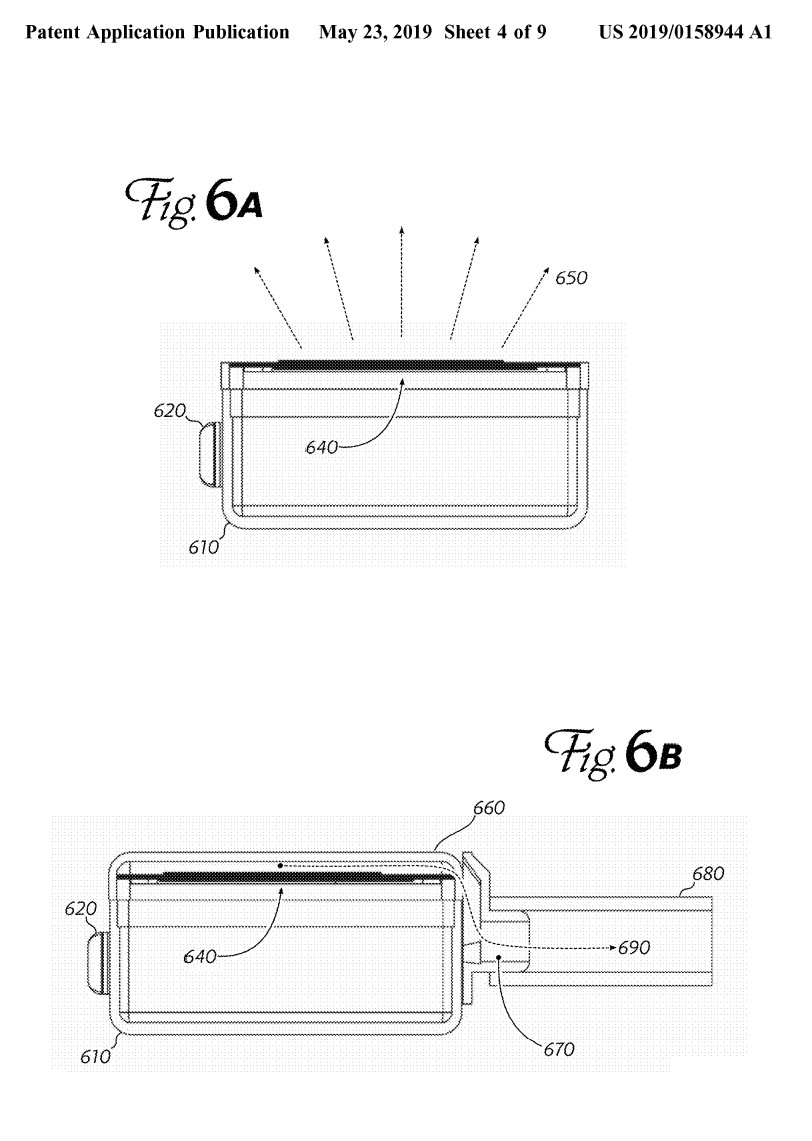
Above: an open BA driver, below: a standard BA driver
To understand the tia system, it helps to first understand how a standard BA configuration works. Usually, we see there are two mediums for which frequencies are carried from a BA driver: 1) a slot, a spout, or a hole at the driver itself, and 2) a connecting tube which then carries the frequencies to the ear. This is how the large CI driver and the midrange ED driver in the A3t are configured. But the disadvantage of using this typical configuration, particularly with a tweeter, is that these frequencies lose energy over the distance of the tube, resulting in less output (poor treble extension) and added resonance when the frequencies reach the ear.
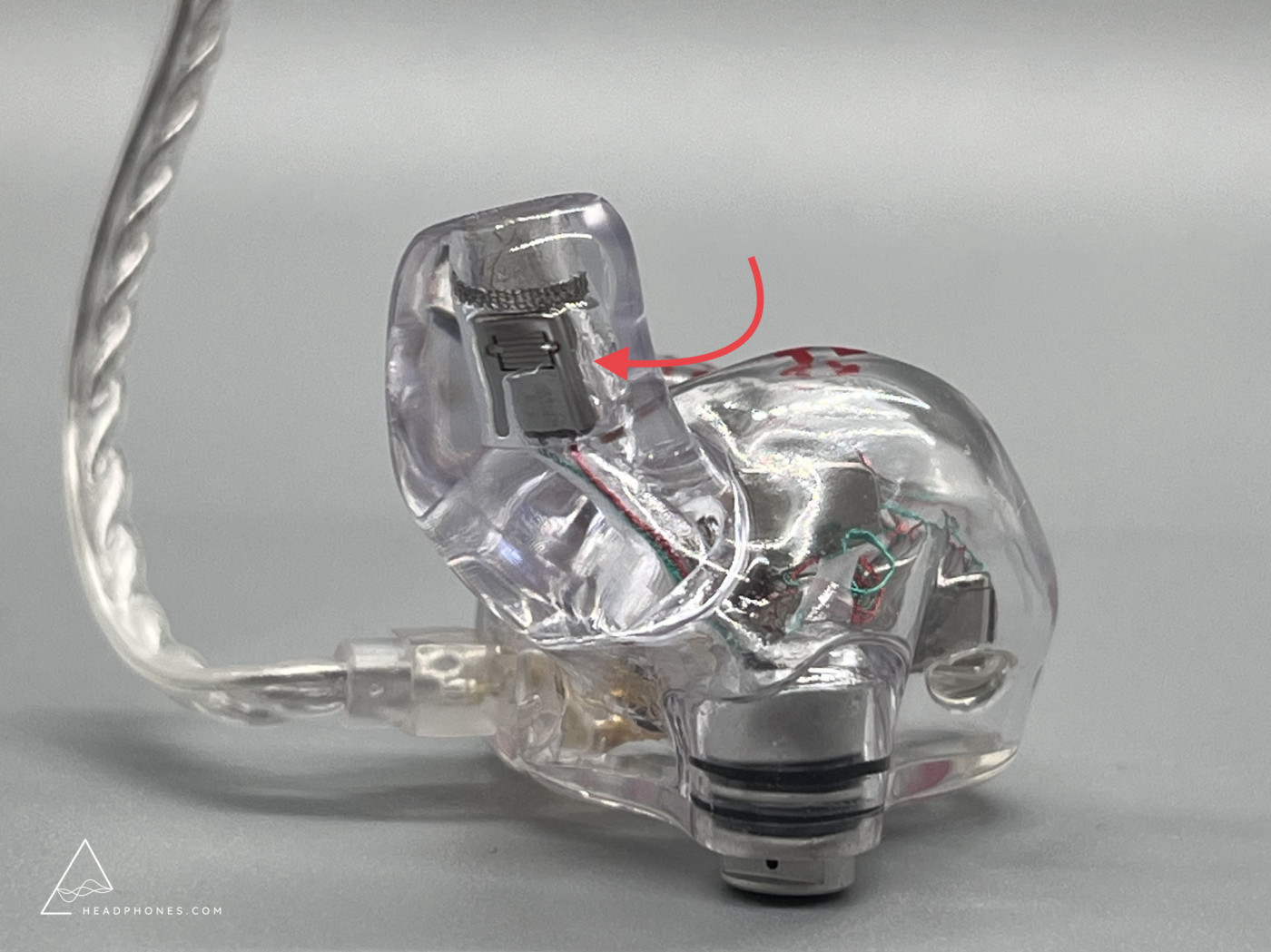

Scuffed illustration of how the open BA has been uniquely wired.
The tia configuration circumvents these limitations by “opening” a BA, which is to say removing the aforementioned slot, spout, or hole at the driver and allowing the frequencies to radiate from the inner diaphragm of the driver itself. But this still doesn’t address the limitation of travel distance, so the next step - at least with a BA tweeter - is mounting the driver directly at the nozzle of the IEM itself. Then what do you do with the wire connecting to that driver because there's only so much room at the nozzle? If you're 64A, you run it through the tube that connects to the orifice of the Apex module (see below) and have it pop out from a split of airtight plastic. Collectively, these differences translate to superior treble extension in the 64A IEMs, albeit not without idiosyncrasies I’ll delve into later.
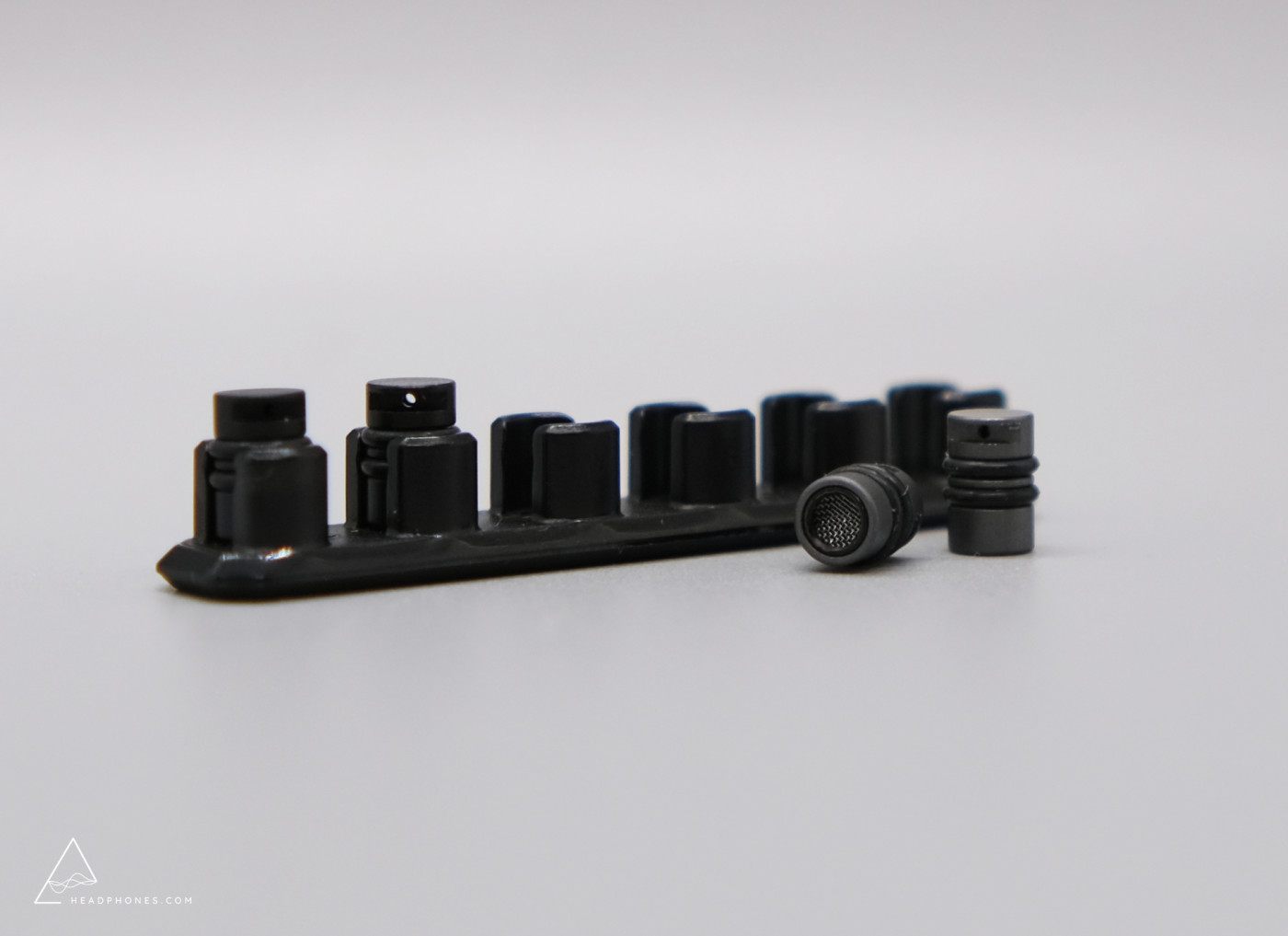
Speaking of Apex, there are a couple other patented technologies that 64A utilizes in their IEMs. The Apex technology is basically a more fancy form of venting an IEM. While the patent encompasses different forms of venting (see the Trio and Fourte which have the technology but do not have the cylindrical module seen on most of 64A’s IEMs), this is usually achieved via the visually distinctive Apex modules.
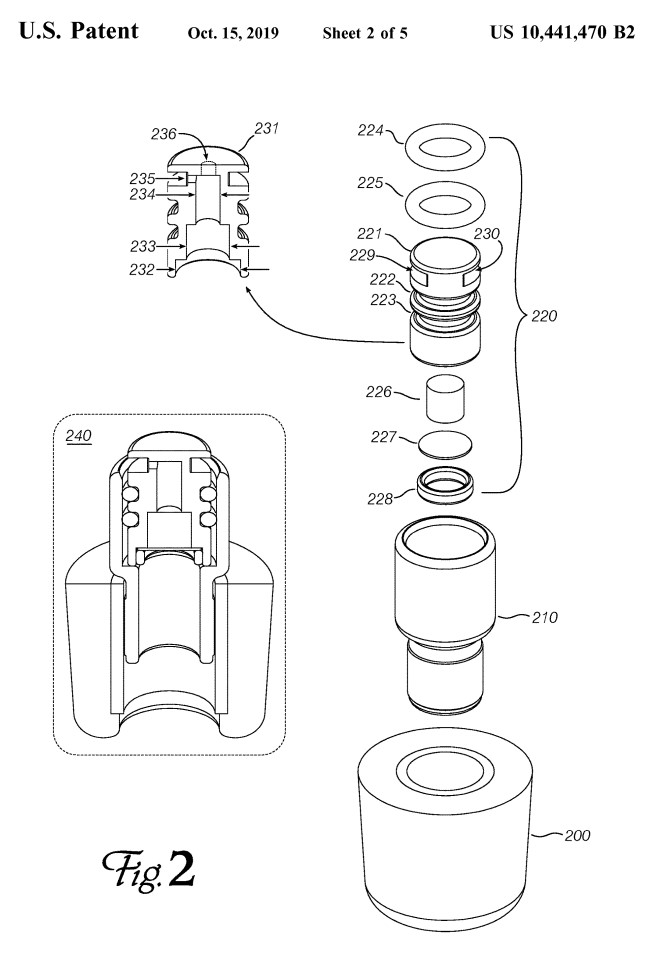
The Apex modules are cylinders composed of aluminum that are plugged into an orifice at the faceplate of the IEM which, in turn, is connected directly to the nozzle via a tube. Ridges are present around the module and outfitted with O-rings to achieve an airtight seal. Air travels through a filter and viscoelastic foam within the module to control the exchange of air pressure; air exits the module through a small hole that rests between the finger notches of the module. This is also a simple but clever solution to mitigating wind noise, as the module can be inserted in the IEM at an angle to have wind pass by.
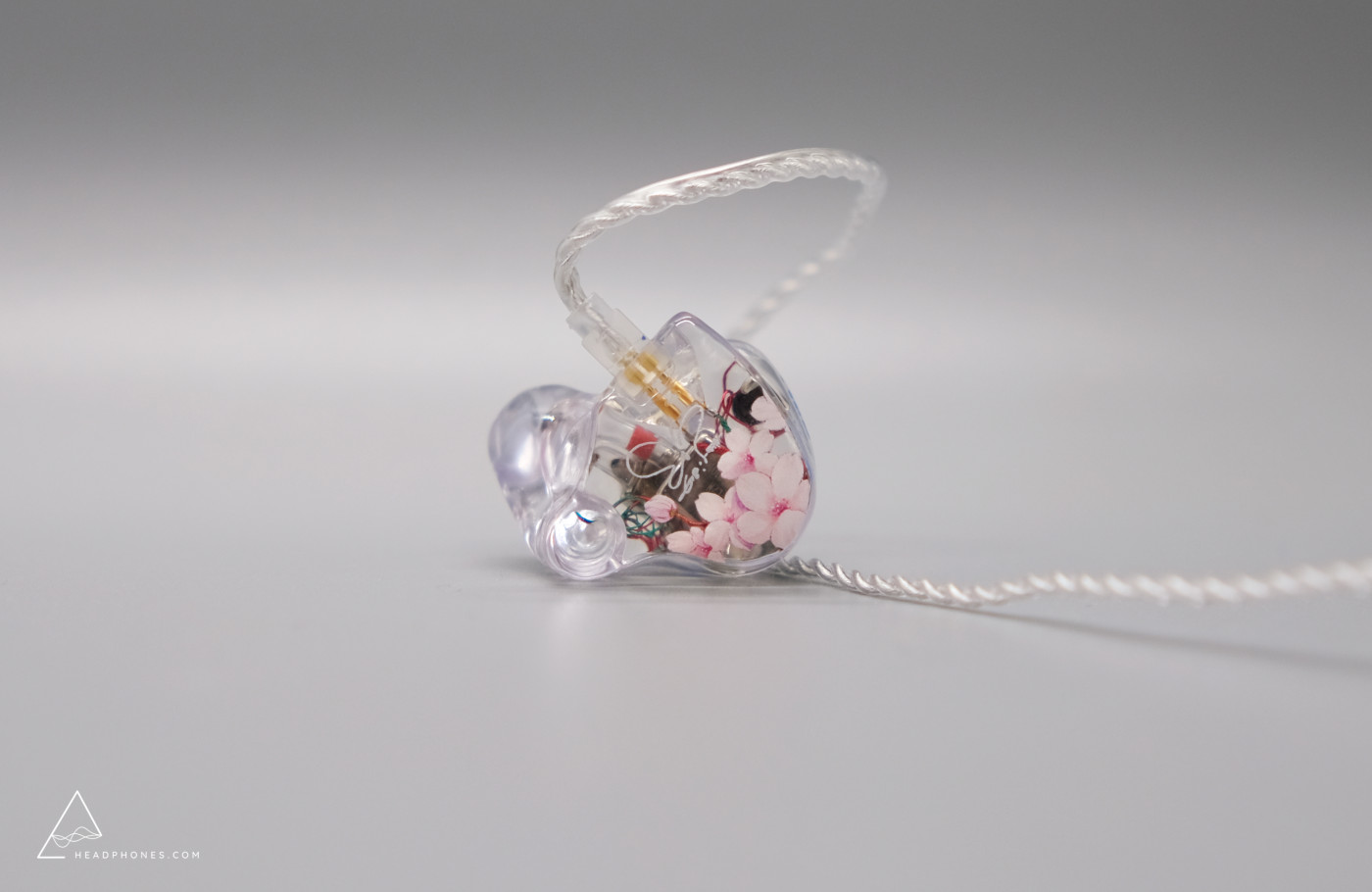
There are two prime advantages that come to mind when considering the Apex system. First is the pressure-relief it provides. With a traditional sealed IEM, sound waves build up against the ear drum, causing discomfort over longer periods of listening. Here's an excellent excerpt (better than any explanation I could write) from Brooko Review's of how this works anatomically:
"By sealing the ear canals, we actually turn our heads into a big amplifier. If this sounds weird, try doing any exercise (to get your heart beating), and then plug your ears, listen and then unplug your ears again. Yep – you’ve just amplified things enough to hear your internal body functions. On top of that, when we seal the ears, and play sound directly into them, Stephen Ambrose has been able to deduce (in frequency vs phase tests) that not only are the sound waves amplified, but we also create pneumatic pressure. Our ears have an inbuilt defense mechanism called the acoustic reflex which works really well to dampen loud sounds so that we don’t feel the full force. But typically what has been happening is that in listening to IEMs, we are triggering that acoustic reflex early, which is dampening the sound, so we turn the volume up, which further triggers the acoustic reflex – and the cycle continues until the reflex is overwhelmed, and we are putting sound waves at dangerous levels into our inner ears, and hearing damage ensues. The other side effect of dampening the sound is that when the mechanism is triggered, our ear drums are pulled tauter, and results in degradation of sound." (Brooko Reviews).
Naturally, Apex relieves some of this pressure, thus preventing the onset of this reflex. But you'll recall I stated there are two advantages. The less obvious advantage of the Apex system is its usefulness as a tuning parameter, as it introduces a known source of leakage which can be controlled. Incidentally, BA earphones are also more prone to involuntary leakage (relative to dynamic drivers). In theory, the leakage from the Apex port overwhelms this involuntary leakage and allow for tuning superior bass extension. This is more relevant in the case of 64A's UIEMs than their CIEMs; either way, it's likely partially responsible for the “special sauce” many listeners would attribute to 64A’s BA bass.
Of course, no system is perfect, and the Achilles heel of Apex is isolation. It’s a vent, so it simply cannot match the standard -26dB isolation created by a sealed IEM. This is reflected in the naming of the modules; the M20 module provides -20dB isolation and so on and so forth for the M15 and MX modules. However, this limitation is not necessarily glaring in practice, and I would suggest that isolation with the A3t's stock M20 module is adequate to protect hearing in most any loud environment.
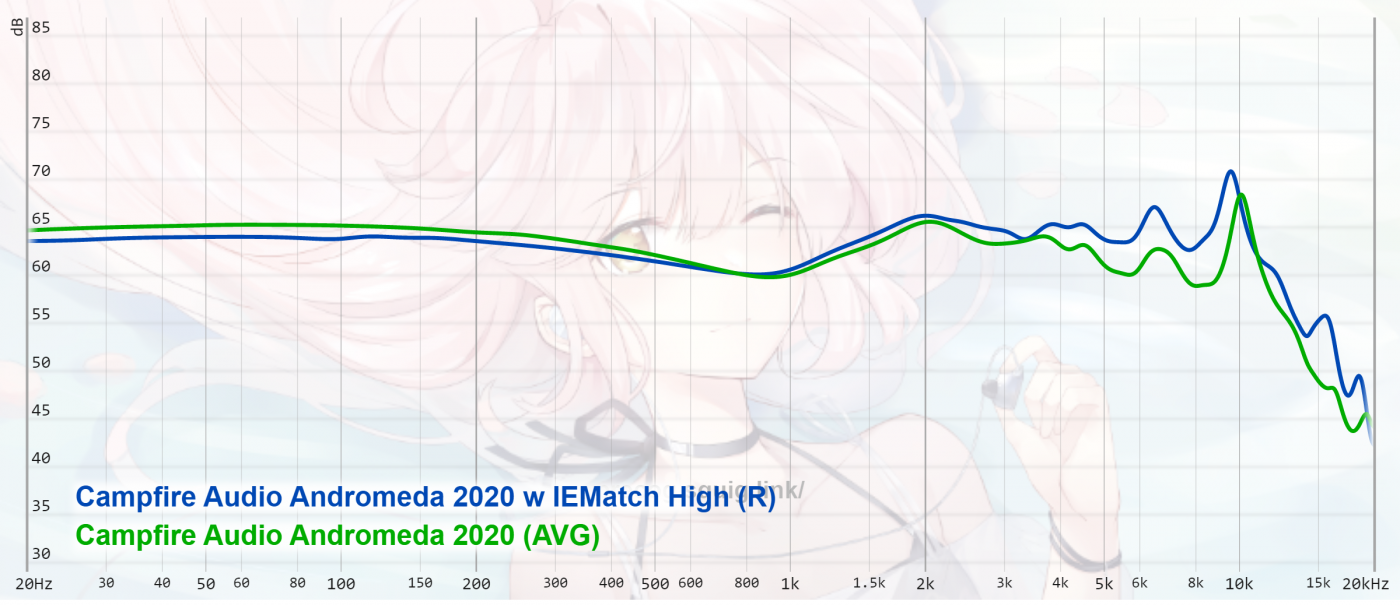
Differences of output impedance can affect an IEM's frequency response.
Finally, LID is 64A’s technology for correcting differences of sensitivity between individual drivers and how they interact with a given electrical load. Traditional multi-BA IEMs will usually exhibit changes in frequency response depending upon the output impedance of a source; the (in)famous Campfire Audio Andromeda is an example of this. It sounds brighter with higher OI sources, vice versa with lower OI sources. LID ensures the A3t's frequency response is consistent regardless of source OI. In truth, though, there isn’t necessarily a “one method solves all” approach for achieving linear impedance and the approach must be adapted based upon the individual IEM. 64A’s pending patent for LID more or less confirms this, as it is broad and outlines multiple methods (for which I’ll spare covering in the interest of brevity) for achieving linear impedance.
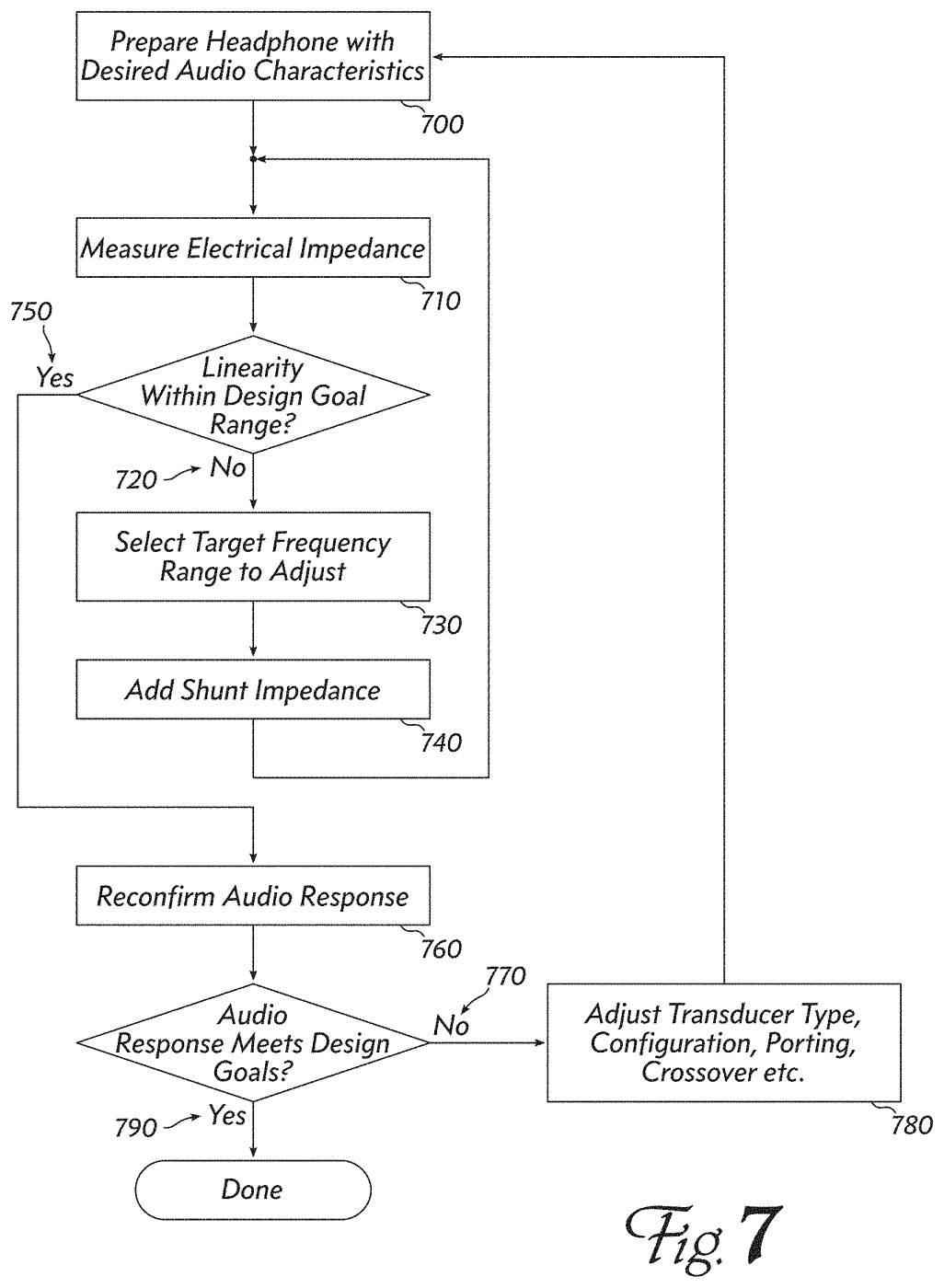
Perhaps a less considered advantage of LID is that it is ideal for source comparisons because it removes the impedance variable from the equation. Assuming that one believes in differences of sound between sources, any differences that a listener observes between sources using the A3t should be the result of source coloration alone.
Sound Talk
The A3t's response measured off of an IEC-711 coupler with a custom attachment that was sent to me by 64A. This measurement is not necessarily comparable with IEM measurements taken using the standard coupler attachment, such as the one shown with the U6t and U12t below. There is a resonance peak at roughly ~12kHz with the A3t.
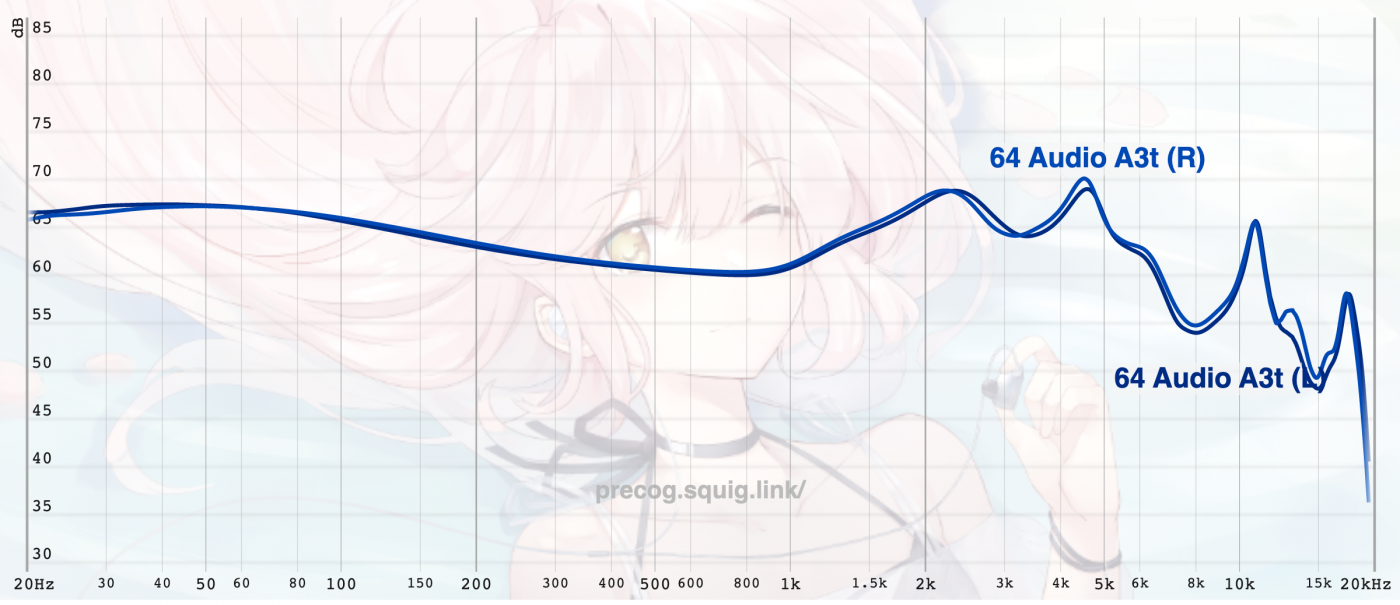
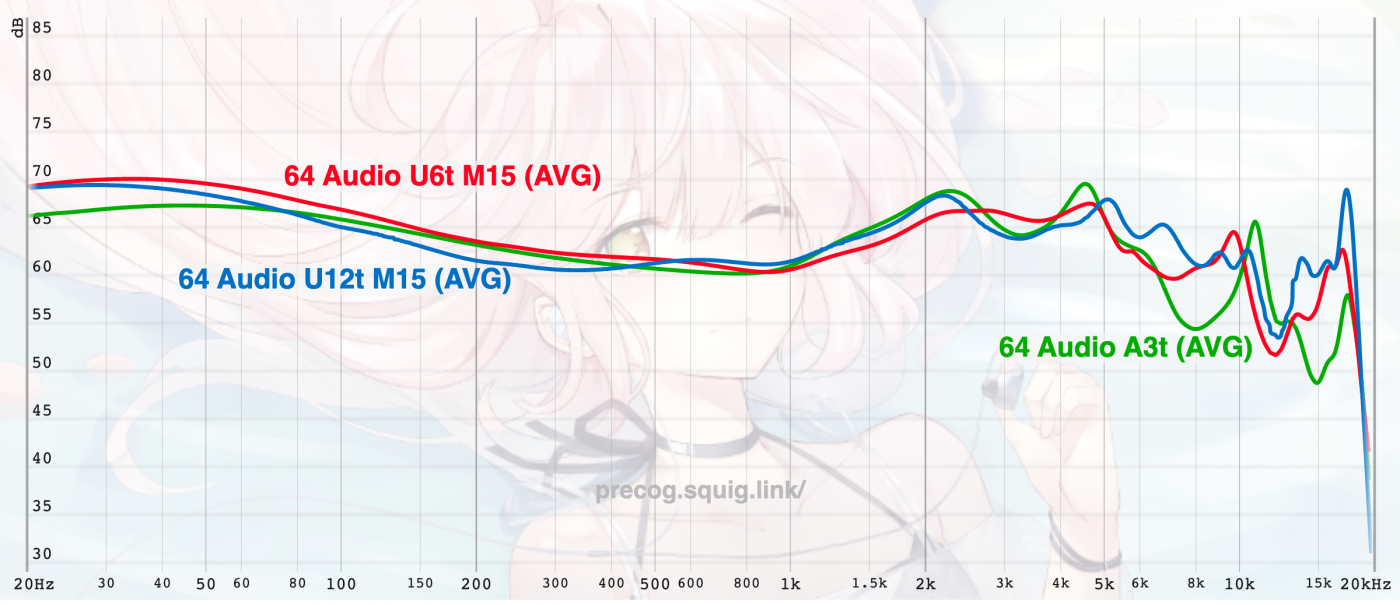
Directly from 64A's marketing literature, "to fans of our A6t and A12t, the A3t will be a very familiar sound". I don't have either an A6t or A12t (too broke for that), but I do have their universal units for comparison. The A3t is certainly reminiscent of the U12t which has a distinctly U-shaped tuning with boosted sub-bass and upper-treble. It basically comes across as a low-resolution U12t with added colorations to its frequency response. This is important because, academically, the U12t isn't necessarily the best IEM on paper for its frequency response. It's an IEM that strikes an extremely fine balance in actual listening with little margin for error in emulating its unique tonality. Let's take a closer look at what the A3t gets right and where it stumbles by comparison.
More Subjective
The A3t is on the better end of what some might consider maligned BA bass, and it follows in the footsteps of its older brethren, the U6t and U12t. Mid-bass reproduction is remarkable for a BA due to an extra dash of presence at around 300-400Hz; in particular, drum machines hit with a generous sense of impact behind them such as on Loona and Kep1r’s cover of “Don’t Go”. Additionally, consistent with the superior sense of control that BAs are often associated with, this hint of mid-bass is not in excess to muddle quicker bass lines on Oh My Girl’s “Replay”. It’s interesting to juxtapose the A3t to Moondrop’s single-DD series, most of which follow a near-identical bass curve. The A3t manages to seemingly slam harder despite it being BA and, of course, with cleaner and drier (which may or may not be desirable) bass lines. That’s certainly not a fair comparison, but it should illustrate where the A3t stands for its bass performance to me.
The A3t’s midrange is mostly where I’d like it to be as a self-proclaimed connoisseur of more “musical” midrange tunings. For the majority of listeners, I suspect the A3t’s midrange will work best with male vocals. There’s a pleasant warmth to Brett Young on “In Case You Didn’t Know” and the drum machines, as much as I dislike hearing them in modern country music, don’t fly half bad on this track with the A3t. By contrast, the A3t's more reserved 2kHz pinna compensation and upper-midrange take some bite out of mezzo-soprano and higher vocalists, such as Faith Hill on “It Matters to Me”. But if it wasn’t already obvious, my listening discography tends to be less “mature” and consists of mixes that are often artificially boosted in these regions; the A3t’s upper-midrange tuning acts as a counterbalance on, say, Taeyeon’s “Stay”. Still, I'd be remiss to mention that it sounds like some edge is missing at the very upper harmonics of female vocals. My suspicion?
As I alluded to earlier, 64A’s use of the tia tweeter has always been somewhat contentious to me due to the spectrum of differences I’ve observed between both individual models and the CIEM vs. UIEM versions of said models. The A3t’s tia implementation is more middling for my preferences. The amount of sheer extension on it is almost comical: it straight-up peaks at 16-18kHz, higher in frequency and with more amplitude, than the U12t and U6t. This is something that measurements won’t reflect, but that I can clearly hear in sine sweeps and listening to music wherein this peak mostly presents itself as a high-pitched squeal on recording artifacts (such as on Sabai’s “Million Days”) and an absence of leading attack to instruments like open hi-hats.
At 0:13, there is a high-pitched squeal when the vocalist enters.
Expectedly, at louder listening volumes (~75dB) and on certain tracks, the A3t’s treble can also come across somewhat pesky, somewhat sizzly to my ears. It simply has 1) too much delta from 8-14kHz compared to the U12t or U6t (which are already more reserved in these regions) and 2) too little bass to balance out this upper-treble boost. Now, I have to disclaim that this sentiment won’t apply to all listeners. I’m a younger listener, and admittedly, my ears are still quite sensitive to higher-frequency content. But it stands that this is not a particularly natural treble response and that it could use some refinement despite the ear-boggling extension.
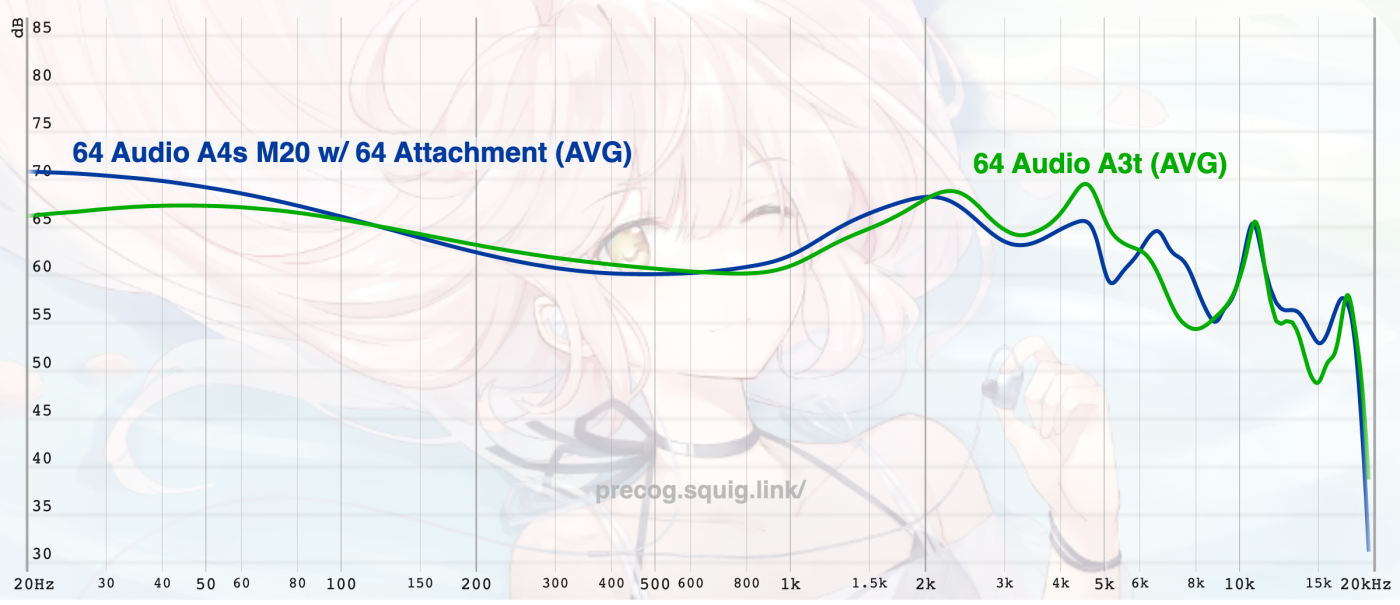
I actually had to do a double-take when I heard this peak, as I’ve associated 64A’s CIEMs with being somewhat darker than their UIEMs. Sine-sweeping my 64A A4s, however, yielded similar observations. I’ve just never noticed it on the A4s due to more bass presence to mask it. In any case, my hypothesis is that the increased insertion depth of the CIEM is shifting the tia driver's peak higher, and the antecedent frequencies lower, similar to what one observes with the coupler resonance peak when inserting an IEM deeper into an IEC-711 coupler.
Technicalities
Unfortunately, I suspect that this unevenness in the treble - specifically the strong recession prior to the upper-treble peak - negatively impacts the A3t’s timbre. I find it to have a smooth taper to decay with a less-than-desirable sense of weightless-ness to midrange and treble transients that most would associate with “BA” timbre. This is the prime distinction that stands out in A/B with the more expensive U6t, and blind, I suspect I would place the A3t at around the $500 mark - optimistically - for its detail retrieval if the U6t is closer to $1000. As a testament to driver count limitations and technical performance, interestingly, I also find the A4s to be more resolving than the A3t which I certainly wouldn’t have imagined to be the case when examining their frequency responses.
The A3t's other technical qualities are more optimistic. Imaging on the A3t is decent for $900; certainly above average in the grand scheme of things due to the IEM’s ported nature. The “walls” of the stage are perceptively large and are at a decent length away from the sides of the ears. Recessions in frequency response and a more relaxed pinna compensation region usually contribute to this phenomenon. Center imaging is not distinct or sharp akin to the U6t and U12t - which, to me, points to a difference of intangible performance - but with some imagination, vocals on certain tracks seem to pop outwardly by an inch or so in terms of soundstage depth.
A positive characteristic that stands out about the A3t is its dynamics. It sounds explosive and like it hits hard, thus engaging my interest despite the middling detail performance. I’ve often hypothesized that perception of dynamics, particularly dynamic contrast, is partially a product of upper-treble peaks and extension. After all, the most dynamic IEMs that I’ve heard such as the U12t, Subtonic Storm, and Elysian Annihilator all have some measure of them. The A3t's extra dash of mid-bass also likely aids in this perception.
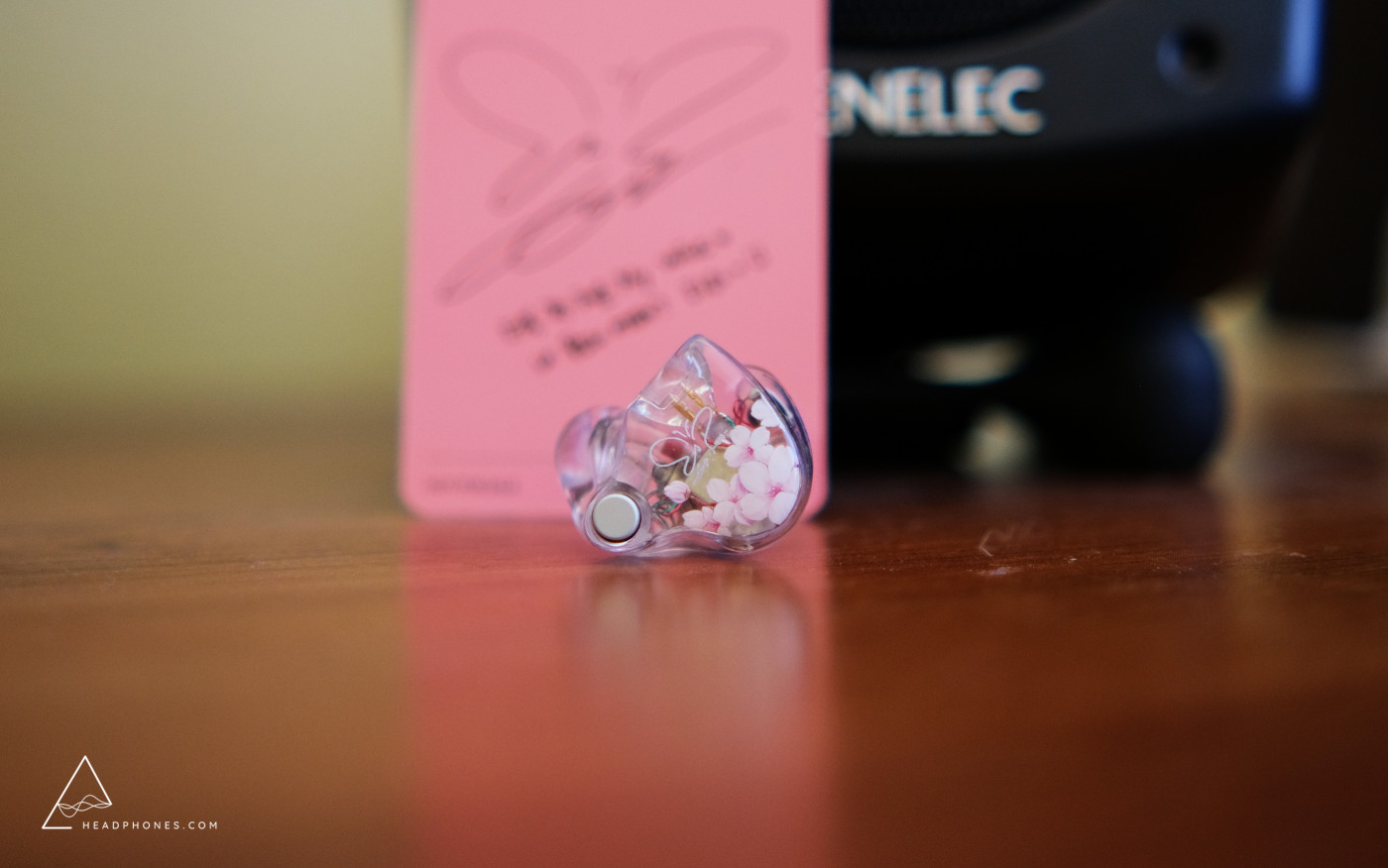
Refining the A3t
EQ is a powerful tool when one can rely on the accuracy of measurements. Unfortunately, equalizing the A3t presented a unique challenge, as the majority of its idiosyncrasies seemed to be a product of its treble response which measurements weren’t accurately reflecting. Auto-EQ is also only really usable up until the coupler resonance peak. This basically meant that I was stuck EQ-ing the A3t by ear through trial and error and using my Genelec G Two and Symphonium Helios as references.
My process consisted of the following:
- Sine sweep the A3t and confirm recessions exist from 5-8kHz and 10-14kHz
- A/B select test tracks about a hundred times (seriously, if not more) between speakers and the A3t, adding in filters and re-calibrating as I went
- Settle on broadly boosting 6kHz, 13kHz, and pulling down 17kHz
I wondered whether raising the lower and mid-treble regions would be enough to balance the 17kHz peak, but it remained too spicy so I chose to bring it down a tad. Collectively, these filters bring the A3t’s treble response much closer to neutral. There’s still some treble valley to my ear; however, it would require some major trial and error to iron out the remaining kinks.
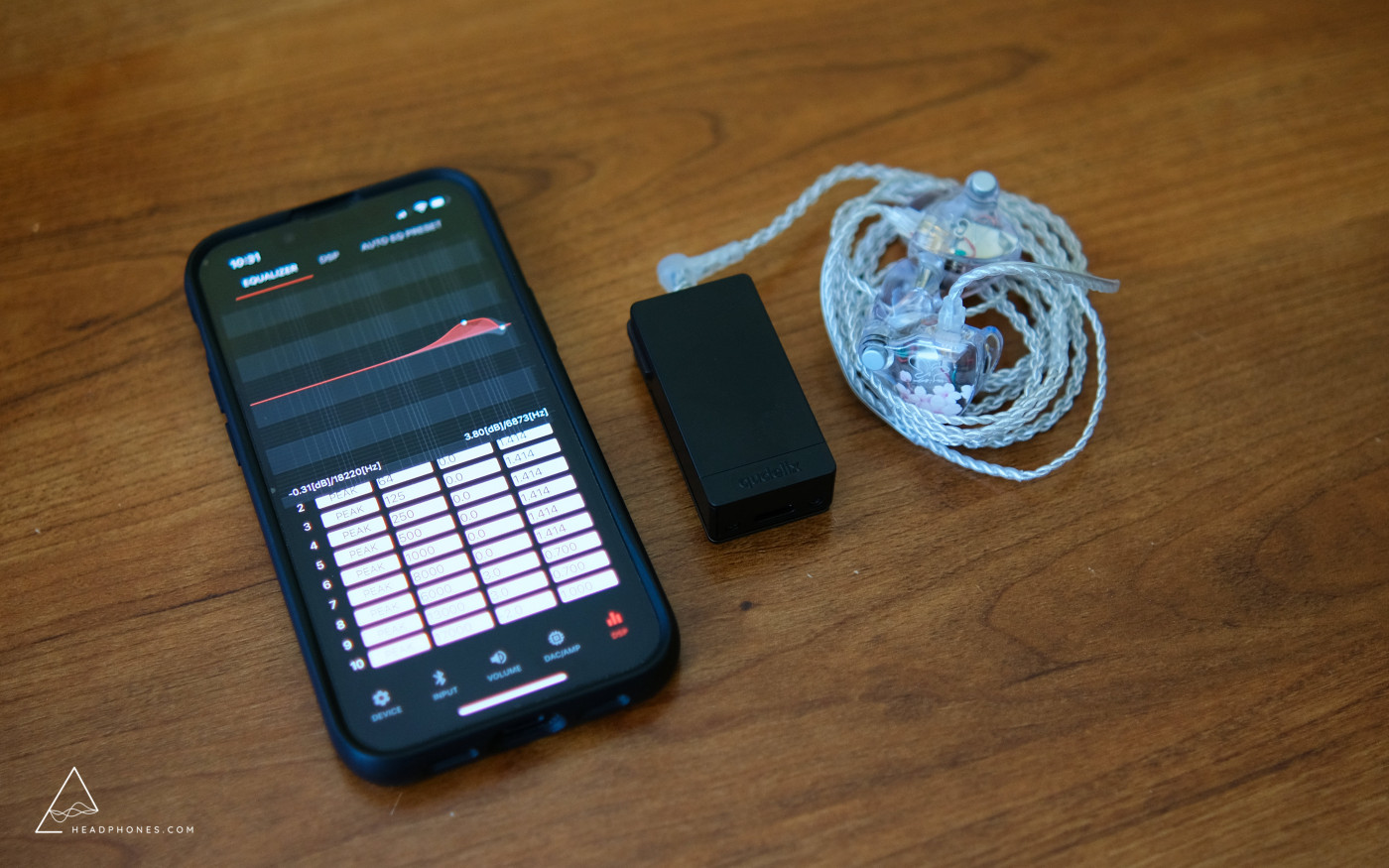
My portable setup: Qudelix 5K with PEQ to A3t
It might be in poor taste to say “Aha, I told you so”, but when one plays with EQ, it becomes abundantly clear that a majority of the A3t’s middling technical performance is a product of the uneven treble. In particular, the boost at 6kHz does wonders for the midrange too, adding back that slight edge to female vocals for more accurate timbre production. The A3t’s perceived clarity, image precision, and timbre all improve at perhaps the slight expense of some soundstage height. Of course, I’d still maintain that there are limits to EQ. Even with EQ, the A3t does not touch the lofty heights of either the U6t or U12t for technicalities. Nonetheless, it provides a glimpse into the 3BA configuration’s full potential if the tweeter had been more refined; with EQ, I find the A3t to come across more like an “A-” tier set versus a “B” tier set for technicalities.
The Bottom Line
Should you buy the A3t? Maybe. No words being minced, the A3t is not the giant killer that early rumors may have touted it to be. It’s also not the most impressive set for its $900 MSRP. It’s mostly just decent: a decent sounding IEM overall, a decent option in the less crowded playing field of CIEM options. You’ll realize the benefits of 64A’s technologies which other CIEM companies lack; however, spending some extra moolah for something like the Elysian Diva or going the more conventional UIEM route at the same price is what’ll get you to the big leagues in terms of sound quality.
Personally, I am okay with my decision to purchase the A3t. The use of EQ with the Qudelix 5K makes it an acceptable daily driver for my purposes. However, it stands that EQ is not an ideal solution, especially with IEMs, and you’re usually better suited by purchasing an IEM with an ideal frequency response from the get-go. My earlier conclusion has to reflect this sentiment. That said, I have chosen to do an extensive breakdown on the A3t because I have a strong passion for these low driver count setups and, to some degree, the A3t shines a light on their potential even if it might've fallen short at the finish line. I'm still looking forward to seeing where 64A takes their entry-level lineup in the future; a U3t with some more refinements to the tweeter and some trickle-down technology would be a welcome release.
-Precogvision
---
Discuss the 64 Audio A3t and other custom IEMs on the HEADPHONE Community Forum here.
---
